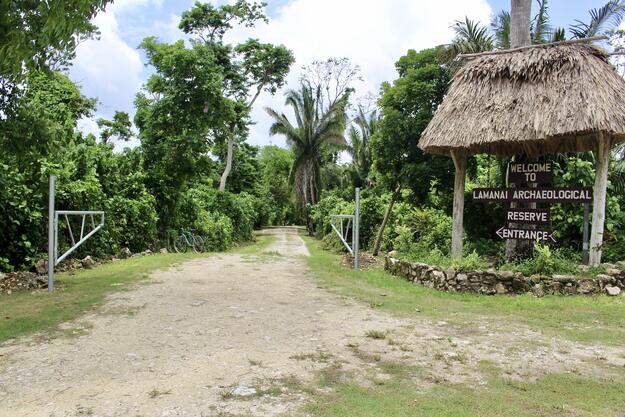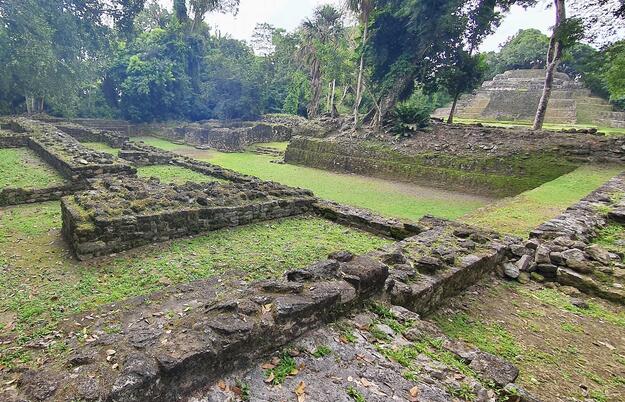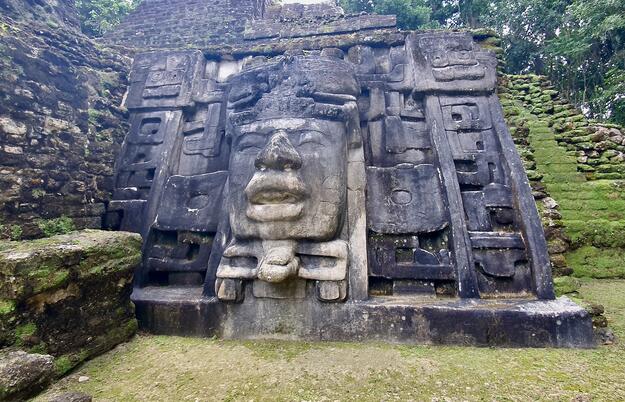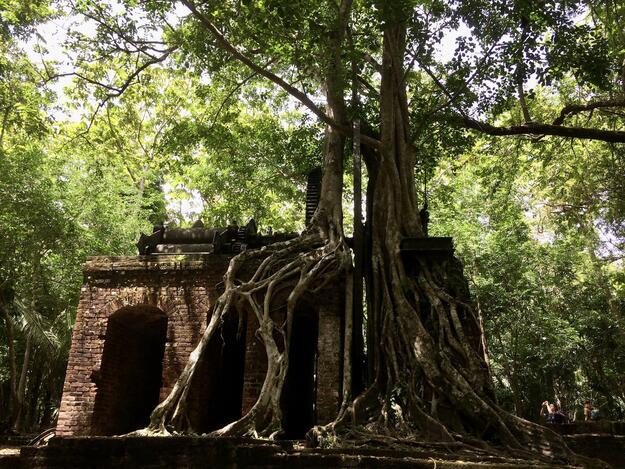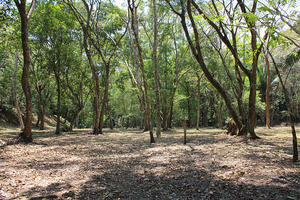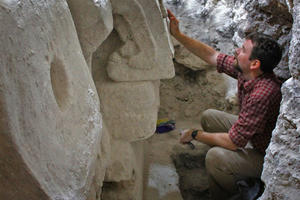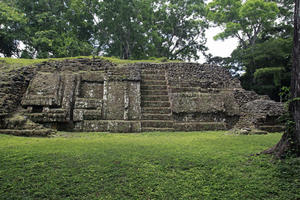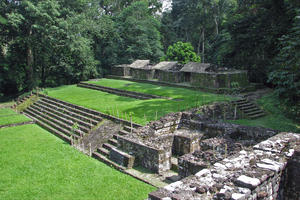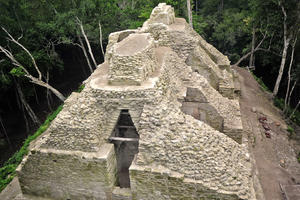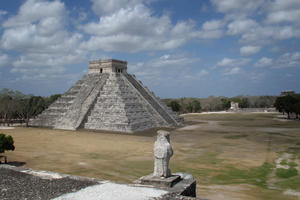Lamanai
Site History and Significance
A 1500 BCE City-State
Northwest of Belize City, on the west bank of the New River, lies the archaeological site of Lamanai (from the Yucatec Maya for “submerged crocodile”), a city-state dating to 1500 BCE. Archaeological research has revealed that the site was continually occupied for 3,000 years until European contact. More than 700 Maya structures have been identified, but only a few have been excavated and studied, including a ball court, stelae, and principal structures like the Mask Temple, adorned by two impressive carved limestone masks over 13 ft. (3.9 m) in height.
While primarily associated with the Maya culture that once flourished there—a notion that is reinforced by current visitor interpretation—the cultural landscape of Lamanai also comprises vestiges of colonial and post-colonial occupation, as well as elements of modern-day Belize. The ruins of two sixteenth-century Spanish churches symbolize historical forced religious conversion and indigenous resistance. Nearby, the ruins of a brick sugar mill, now overgrown with trees, represent the period from 1837 to 1868 when the area was a British sugar plantation that relied on enslaved and indentured labor.
A Rich Cultural and Natural Landscape
In the 1980s, refugees from the civil wars in Guatemala and El Salvador settled among the ruins, forming the village of Indian Church, as the site was known before the Maya name Lamanai was adopted. The Belizean government established the Lamanai Archaeological Reserve in the 1990s and introduced visitor amenities that include trails, a site museum, and a visitor center. Residents were moved a mile south to the new Indian Church Village but maintain a strong connection to Lamanai. In addition to its rich cultural landscape, Lamanai is surrounded by a forested area home to a rich variety of native flora and keystone species like jaguars, spider monkeys, howler monkeys, bats, and crocodiles. The cultural and natural landscape is increasingly threatened by deforestation due to expanding agricultural lands.
Balancing the Effects of International Tourism
Like many other countries in Central America and the Caribbean, Belize relies heavily on international tourism. Revenue from tourism, particularly cruise tourism, finances the management and upkeep of archaeological sites like Lamanai, but provides minimal benefit to adjacent communities. The current tourism model limits community engagement and benefit by restricting access and sidelining local residents from decision-making.
2022 World Monuments Watch
Inclusion of Lamanai on the 2022 World Monuments Watch underscores these challenges and the need for sustainable tourism management that integrates the local community, ensuring enhanced interpretation of diverse narratives, strengthened protection of the natural environment, and improved local benefit.
![]()
Learn More
Through the World Monuments Watch, WMF collaborates with local partners to design and implement targeted conservation programs—including advocacy, planning, education, and physical interventions in the historic built environment—to improve human well-being through cultural heritage preservation.
Sign up for our newsletter to receive regular updates on our projects, stories from the field, upcoming events, and more!
![]()

